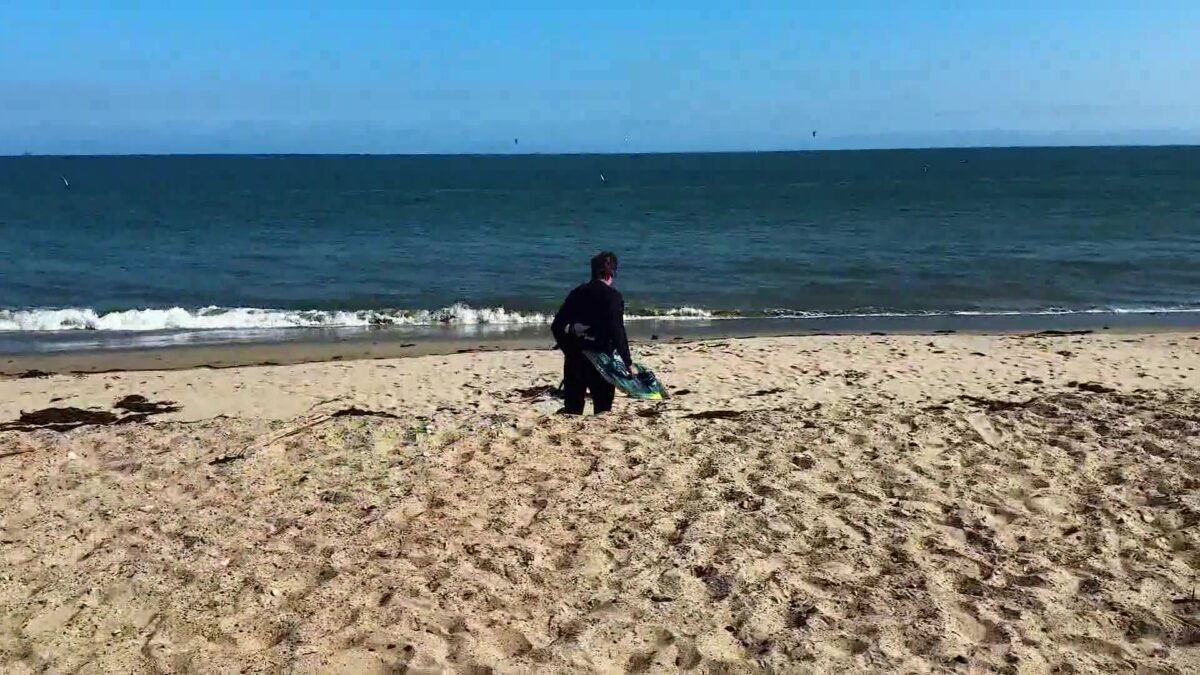Pediatrician Seeing More Patients with Swimmer’s Ear in Santa Barbara

Patricia Martellotti
SANTA BARBARA, Calif. – Several beach goers are going kite surfing at Ledbetter beach this week.
But before entering the water, they take extra precaution to protect their ears by putting on ear plugs.
They’re trying to avoid a common ear condition called swimmer’s ear.
But not everyone knows what it is.
“Swimmers ear is an infection of the ear canal between the middle ear and the outer ear,” said Dr. Dan Brennan of Sutter Health.
As summer time kicks off, Brennan believes more people go swimming.
Sometimes, moisture will build up inside your ear afterwards.
“That allows for bacteria to build up, and they start to get a little ouchi in the ear,” said Brennan.
Occasionally, Brennan has seen fungus leading to swimmers ear.
But the condition is preventable.
“We recommend swimmers eardrops, and so this is usually a rubbing alcohol-based solution that you can just buy at your drugstore and when you get out of the water can put some drops in the ears … with the drops do as they flush the water out,” said Brennan.
If your child has ear pain, Brennan says you’ll want to see your doctor right away.
“We push and pull on the earlobe and if we think it’s a swimmer’s ear thing we will give you some antibiotic steroid prescription,” said Brennan.
From Sutter Health:
Pediatrician Dr. Dan Brennan
If your child suddenly experiences ear pain after swimming, or if you want to know what to do if the problem pops up over the summer months, Dr. Dan Brennan, board-certified pediatrician at Sansum Clinic, now part of Sutter Health, and Children’s Health Service Line Medical Director for Sutter’s Central Coast, answers your common questions about a condition known as swimmer’s ear.
What Is Swimmer’s Ear?
Swimmer’s ear is an ear canal infection associated with excessive water exposure. It occurs most frequently during summer and is different from the middle ear infections closely associated with colds during the winter months.
What Causes Swimmer’s Ear?
Swimmer’s ear is most commonly caused by a bacterial infection. Frequent water exposure and in some cases, the moist environment caused by a wet ear canal, allows the bacteria to grow.
What Are the Symptoms of Swimmer’s Ear?
Early on, kids may complain that their ear itches. As the infection progresses, the ear may become very sensitive to the touch.
A pull or push on the outside of the ear may be painful.
The ear canal may be filled with debris or pus. In that case, your doctor may take a culture (swab the ear) to identify the presence of bacteria or fungus.
How is Swimmer’s Ear Treated?
A doctor will need to examine the ear to confirm if it’s swimmer’s ear. Treatment is based on the cause of the infection.
The most common remedy for a bacterial swimmer’s ear is prescription ear drops. These contain both an antibiotic to kill the bacteria and a steroid to help reduce inflammation, swelling and pain. Pain relievers, such as ibuprofen or acetaminophen, may also be prescribed.
During the treatment period, your doctor will likely recommend keeping the ears dry. Treatment with the antibiotic/steroid drops might not work if exposure to water continues while the ear is healing or if there is a fungal infection.
Fungal infections are tougher to diagnose and treat. A visit with an ENT (Ear, Nose and Throat) specialist might be needed to remove fungus from the canal, if that’s recommended, or to begin the use of a topical antifungal treatment.
What Are Ways to Prevent Swimmer’s Ear?
Use inexpensive, over-the-counter rubbing alcohol-based ear drops after swimming. (These are not antibiotics.) The alcohol will flush water out of the ear canal and then evaporate. You won’t need drops every time your child swims but keeping them in your pool or beach bag will help you remember to use them.
If your child develops ear pain and you suspect swimmer’s ear, skip the alcohol-based drops which will only sting. Don’t wait too long to visit your doctor for an accurate diagnosis. If you start treatment right away, the infection will clear up sooner.
Earwax can work as nature’s way of waterproofing your ear canals, so it’s best to leave it alone. In a regular exam, your doctor can determine if it needs to be removed and has the tools to do it safely.
The Latest Breaking News, Weather Alerts, Sports and More Anytime On Our Mobile Apps. Keep Up With the Latest Articles by Signing Up for the News Channel 3-12 Newsletter.